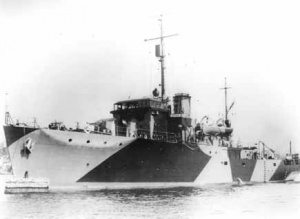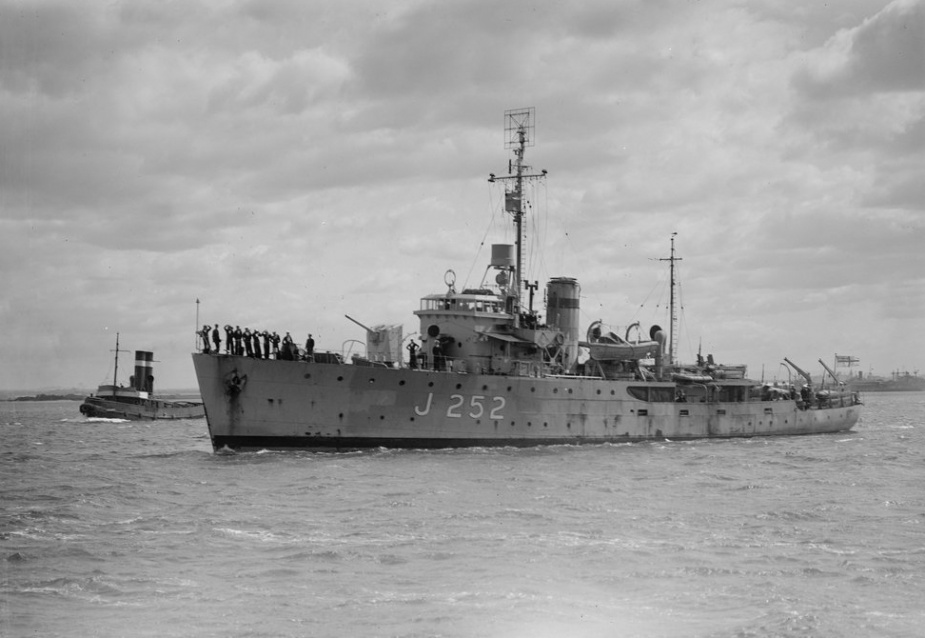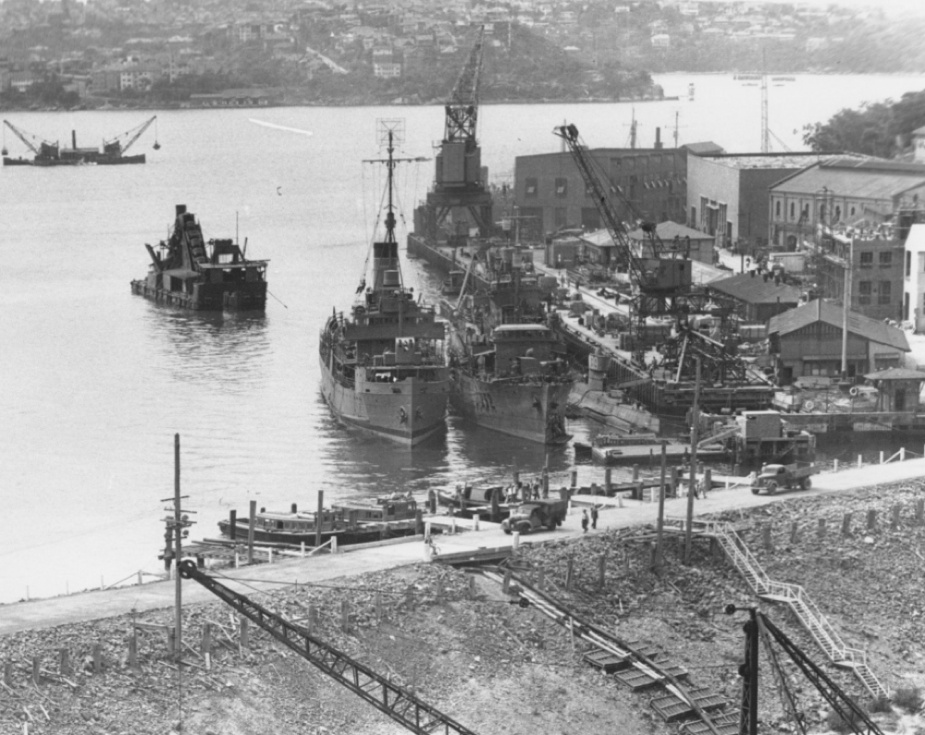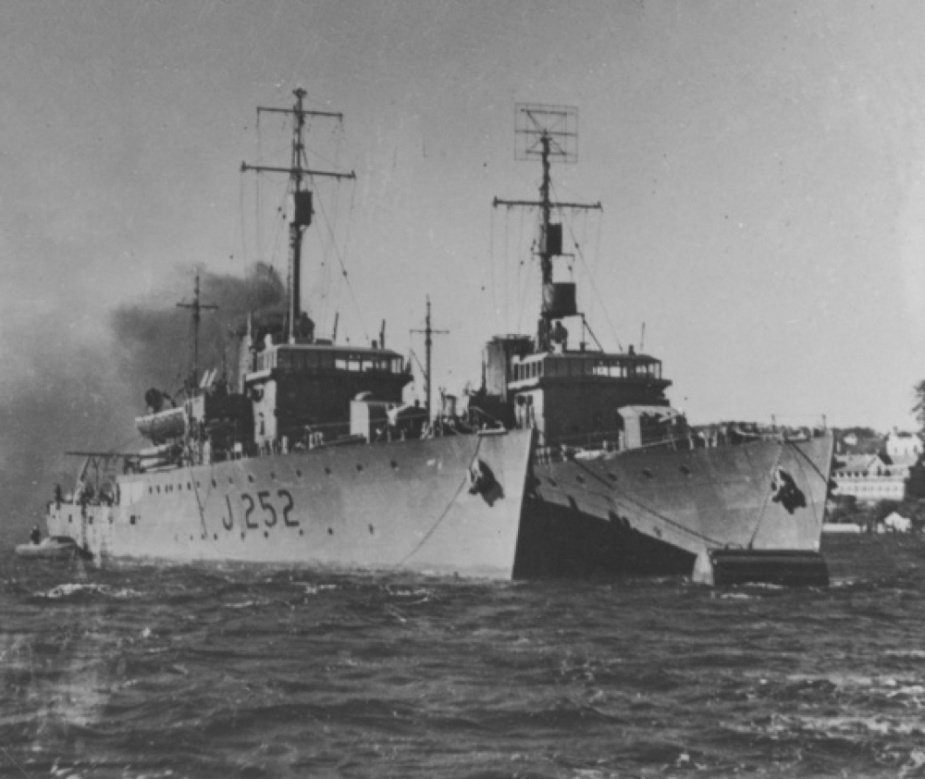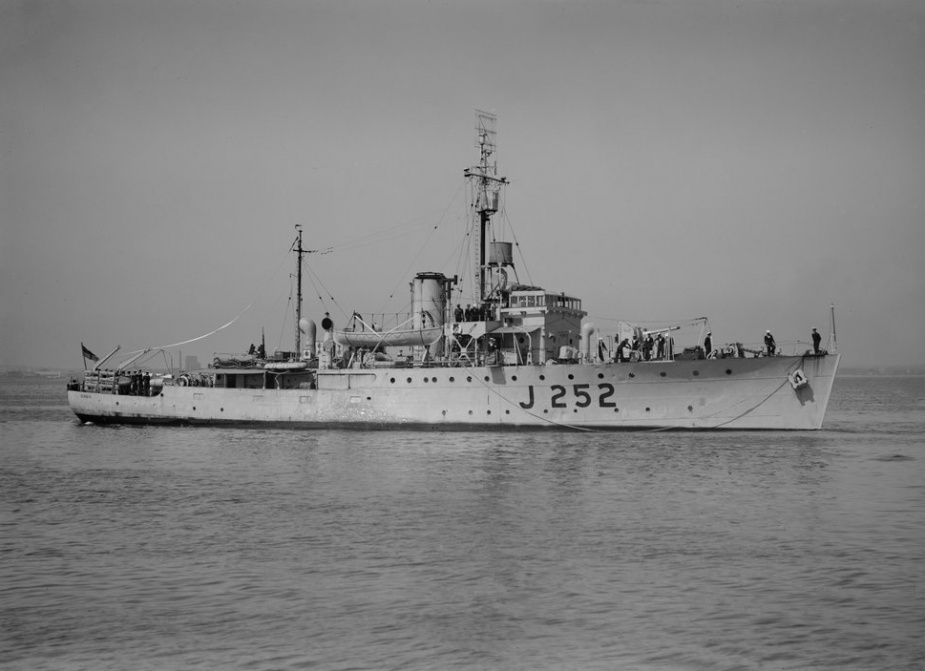HMAS Echuca
| Class |
Bathurst Class |
|---|---|
| Type |
Australian Minesweeper |
| Pennant |
J252/M252 |
| Builder |
Melbourne Harbour Trust, Williamstown |
| Laid Down |
22 February 1941 |
| Launched |
17 January 1942 |
| Launched by |
Lady Royle, wife of the First Naval Member |
| Commissioned |
7 September 1942 |
| Decommissioned |
29 June 1948 |
| Dimensions & Displacement | |
| Displacement | 650 tons (standard) |
| Length | 186 feet |
| Beam | 31 feet |
| Draught | 8 feet 6 inches |
| Performance | |
| Speed | 15 knots |
| Complement | |
| Crew | 85 |
| Propulsion | |
| Machinery | Triple expansion, 2 shafts |
| Horsepower | 2000 ihp |
| Armament | |
| Guns |
|
| Other Armament |
|
| Awards | |
| Battle Honours | |
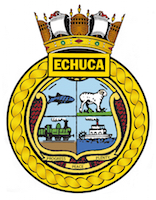
HMAS Echuca was one of sixty Australian Minesweepers (commonly known as corvettes) built during World War II in Australian shipyards as part of the Commonwealth Government's wartime shipbuilding programme. Twenty were built on Admiralty order but manned and commissioned by the Royal Australian Navy. Thirty six were built for the Royal Australian Navy and four for the Royal Indian Navy.
HMAS Echuca was laid down at Melbourne Harbour Trust, Williamstown, Melbourne, Victoria on 22 February 1941. She was launched on 17 January 1942 by Lady Royle, wife of the First Naval Member, and was the first RAN warship to carry the name of the town located on the banks of the Murray River and the Campaspe River in VIictoria.
HMAS Echuca commissioned at Melbourne on 7 September 1942 under the command of Lieutenant Commander Ronald A Nettlefold RANR.
Echuca served as an escort and anti-submarine patrol vessel on the east coast of Australia and in the New Guinea area from October 1942 to August 1944, during which period she steamed 59,000 miles.
In August 1944 she proceeded to Darwin where she passed to the operational control of the United States 7th Fleet Survey Group, Task Group 70.5. Echuca operated on survey duties in northern Australian waters until October 1945, when she proceeded from Darwin to Brisbane to replace minesweeping gear prior to joining the 20th Minesweeping Flotilla to take part in the RAN post war minesweeping programme. Following brief sweeping operations in Australian waters Echuca proceeded with the Flotilla to New Britain and the Solomon Islands.
In August 1946 Echuca returned to Australia for paying off into the Reserve Fleet at Sydney. She returned to service in January 1947 for further minesweeping duty with the 20th Minesweeping Flotilla and until October 1947 was engaged in mine clearance on the Barrier Reef, Queensland.
In November 1947 Echuca towed her sister ship HMAS Inverell from Brisbane to Sydney. Echuca was paid off into reserve at Fremantle on 29 June 1948. On 23 April 1952 the tug HMAS Reserve took Echuca in tow at Fremantle, and conveyed her to Melbourne, arriving on 3 May. The corvette undertook a refit at Williamstown Dockyard before being transferred to the Royal New Zealand Navy, having steamed some 123,000 miles during her RAN service.
Note: This video is hosted on YouTube. Department of Defence users will not be able to view this video on the Defence Protected Network.
This cine film has been placed online as part of the Sea Power Centre - Australia's ongoing archival digitisation program.
Further reading
- 'The Corvettes: Forgotten Ships of the Royal Australian Navy' by Iris Nesdale - published by the author, October, 1982.
- 'Corvettes - Little Ships for Big Men' by Frank B Walker - published by Kingfisher Press, NSW, 1996.
- 'The Australian Centenary History of Defence Volume III, The Royal Australian Navy' edited by David Stevens, Oxford University Press, South Melbourne, Victoria, Australia, 2001.

